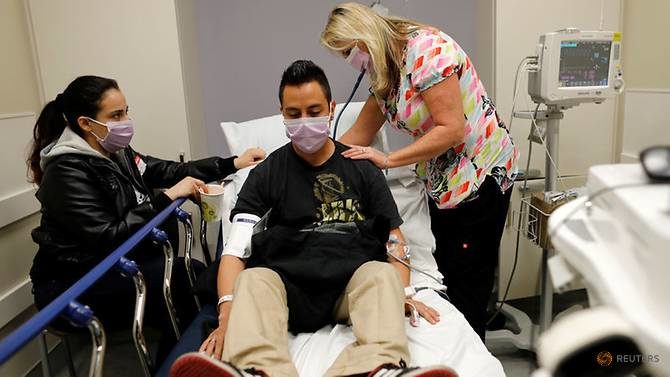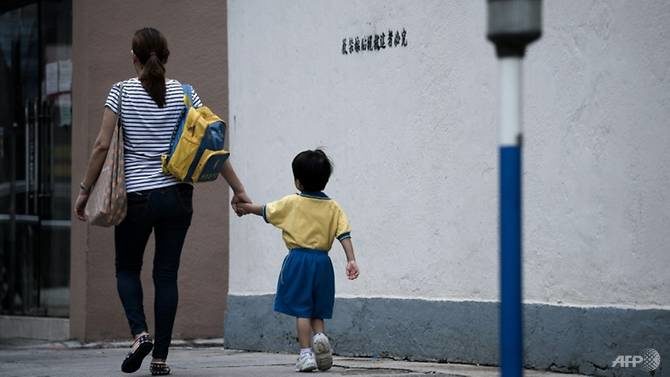
Considered the deadliest pandemic in human history, global influenza infected a third of humanity, killing no less than 50 million and perhaps as many as 100 million people. In one twelve-month period, one out of every 100 people on the planet died from the flu.
The 1918 pandemic disproportionately impacted healthy young adults, ages 20 to 40. Mortality peaked at age 28 years. Young adult men in the military, especially those in close quarters in frontline trenches, were hit hard.
It is estimated that the flu killed more US soldiers and sailors than enemy weapons during World War I. A year after its initial outbreak, the global pandemic had killed more than double the 10 million who had died in World War I.
IMPRESSIVE GAINS IN EXTENDING HUMAN LIFE SINCE
Since the 1918 influenza pandemic, the world has achieved impressive gains in extending human life with the world's average life expectancy at birth now standing at 72 years, more than double the level a century ago.
Antibiotics became available after World War II. Considerable improvements have also been made in sanitation, nutrition, hygiene, housing and worldwide supply of influenza vaccines.
Although influenza and pneumonia were leading causes of death in many countries in the start of the 20th century, by 2015, the top 10 causes of death worldwide did not include influenza or pneumonia.
Comment: And the mainstream media will hammer home the questionable talking point that this is all thanks to vaccines, all but ignoring the aforementioned sanitation, nutrition, hygiene and housing. Vaccines continue to be the only treatment suggestion preferred by the medical establishment while research into alternatives is severely lacking.
Still, seasonal influenza sickens millions, and many countries including Australia, China, India, the United States and United Kingdom report that this year's outbreak is the worst in years.

The world's population has more than quadrupled to 7.6 billion and has shifted from being largely rural to predominately urban, with many millions living in close quarters.
People are more mobile with modern air travel. An estimated 258 million live abroad, and no less than a billion border crossings occur annually.
Such demographics combined with strained health services in some nations and close human proximity to domestic animals, particularly poultry, in others facilitate the rapid spread of influenza.
Estimates suggest that seasonal influenza epidemics can affect up to 15 per cent of the population with enormous economic consequences.
Estimated costs of a US influenza pandemic, for example, would be more than US$100 billion.
Vaccinating 60 per cent of the US population would substantially reduce the costs and the number of deaths. But such a high vaccination rate may be difficult to achieve within the time period required for vaccine effectiveness.
Another challenge: Opposition to vaccinations by some groups and individuals.
Comment: See previous comment.

Health recommendations widely promoted are too often not followed.
The most effective way to prevent the disease's spread is comprehensive influenza vaccination programmes across countries, and the World Health Organisation urges people, especially those in high-risk groups such as the elderly, to get a yearly vaccine.
Comment: Yet no evidence exists showing the flu vaccine's safety or efficacy.
- As this year's flu virus approaches epidemic levels, tens of thousands infected find the current vaccine totally ineffective
- Flu vaccine-miscarriage study sparks ridiculous spin
- Flu vaccine toxicity: 25,000 times more mercury than legally allowed in drinking water
- Americans refusing ineffective flu vaccine this year
- Parents refuse to give kids flu shots even though they're not anti-vaccine
- Flu vaccine madness: FDA expediting approval for deadly flu shot linked to autoimmune disorders, paralysis & death
- A shot never worth taking: The flu vaccine
- Nurse's aide paralyzed by mandatory flu vaccine, awarded $11.6 million
Other precautions include regular hand washing and cough etiquette. The healthy should avoid people who are sick, and the ill should stay at home - resting and drinking plenty of fluids are advised until at least 24 hours after the fever is gone, consulting a physician for complications.
In 2003, the World Health Assembly adopted a resolution urging countries to increase influenza vaccination coverage of all people at high risk and to attain 75 per cent coverage among the elderly by 2010.
Available data for 2015 on seasonal influenza vaccination rates for the elderly show wide variation among countries.
Among 26 OECD countries, for example, none achieved the recommended vaccination rate of 75 per cent for elderly except South Korea at 82 per cent.
Only five countries, the United Kingdom, the United States, New Zealand, the Netherlands and Israel, had vaccinated at least two-thirds of their elderly populations.
ANOTHER PANDEMIC INEVITABLE
Research suggests another influenza pandemic is inevitable, remaining a global threat, and the world is poorly prepared, even wealthy advanced economies. US hospitals, for example, lack adequate medical supplies for a serious flu epidemic and have contended with funding cuts in public health budgets over the past 15 years.
Despite repeated recommendations from military, national security, biodefence and public health experts, political leaders fail to increase funding to prepare for an influenza pandemic.
Consequences of an influenza pandemic are expected to be more severe in developing countries than developed countries.
More people in wealthier countries are likely to have access to influenza vaccines and can afford antiviral drugs while poorer countries do not. In short, the wealthy countries will be too busy dealing with the pandemic among their own populations to address the needs of the poor nations.

Public health specialists have already identified the only solution to avoiding a devastating global influenza pandemic - a universal flu vaccine that protects people against essentially all or most strains of flu, with protection lasting for years or perhaps even a lifetime.
Such a vaccine is likely in the near future, based on recent medical advances.
For years, researchers have sought a "super shot" that could replace the annual vaccination and protect the world's population against most influenza strains - a herculean task against a virus that constantly evolves.
Despite the formidable challenges, a universal flu vaccine is humanity's only way to avoid a global influenza pandemic.
Until then, robust immunisation programmes in all countries are urged.
Joseph Chamie is an independent consulting demographer and a former director of the United Nations Population Division. This commentary first appeared in Yale-Global. Read it here.



Comment: While the concept behind vaccines, and the universal vaccine, may be sound (although certainly not without its issues), its implementation remains problematic. As long as Big Pharma is in charge, can we really expect any kind of safety, efficacy or indeed any transparency? For more on the universal flu vaccine, see: